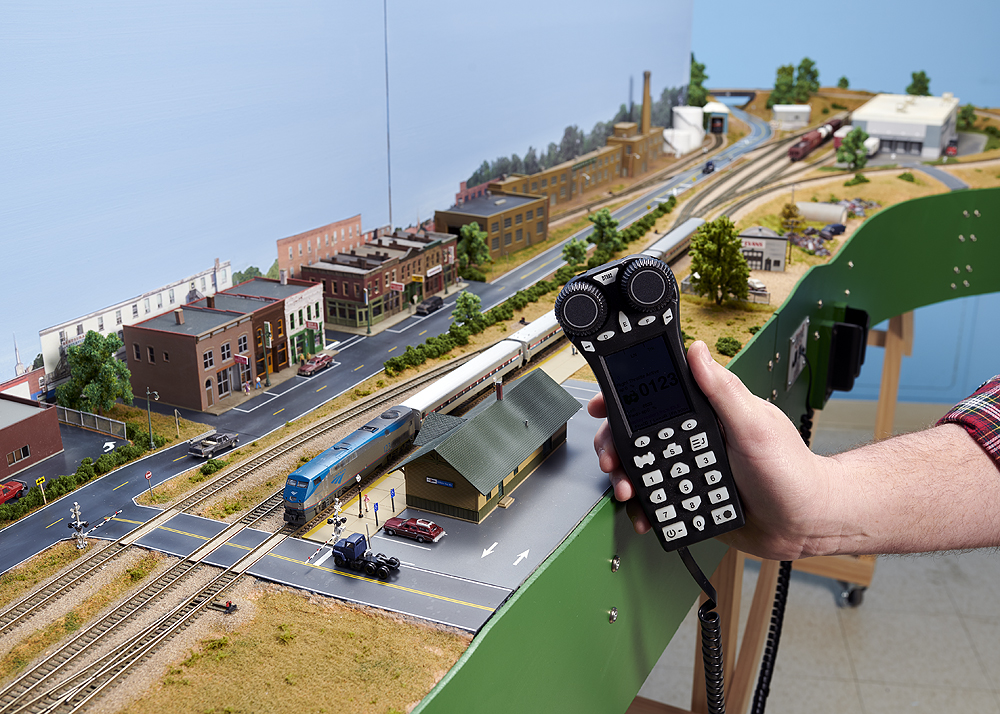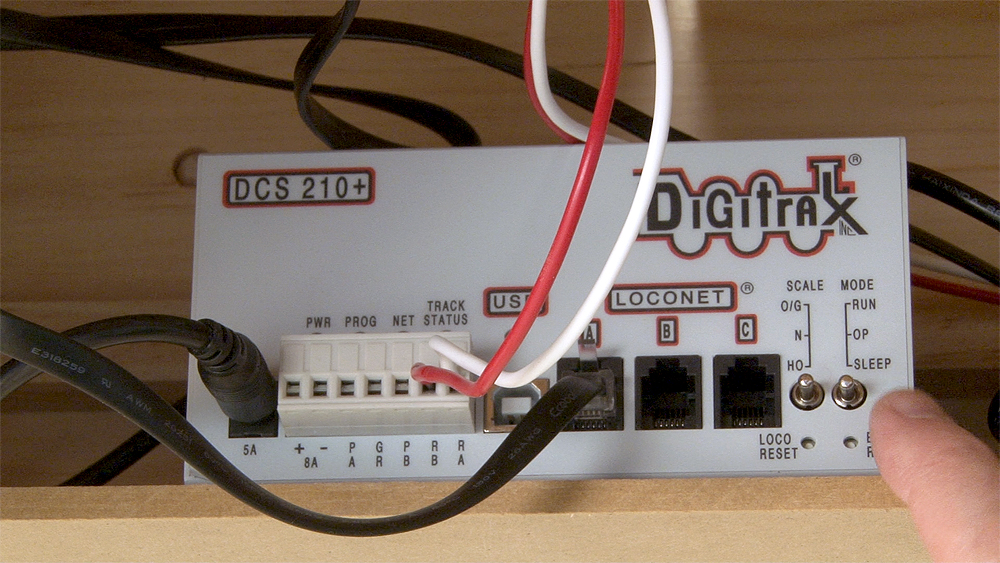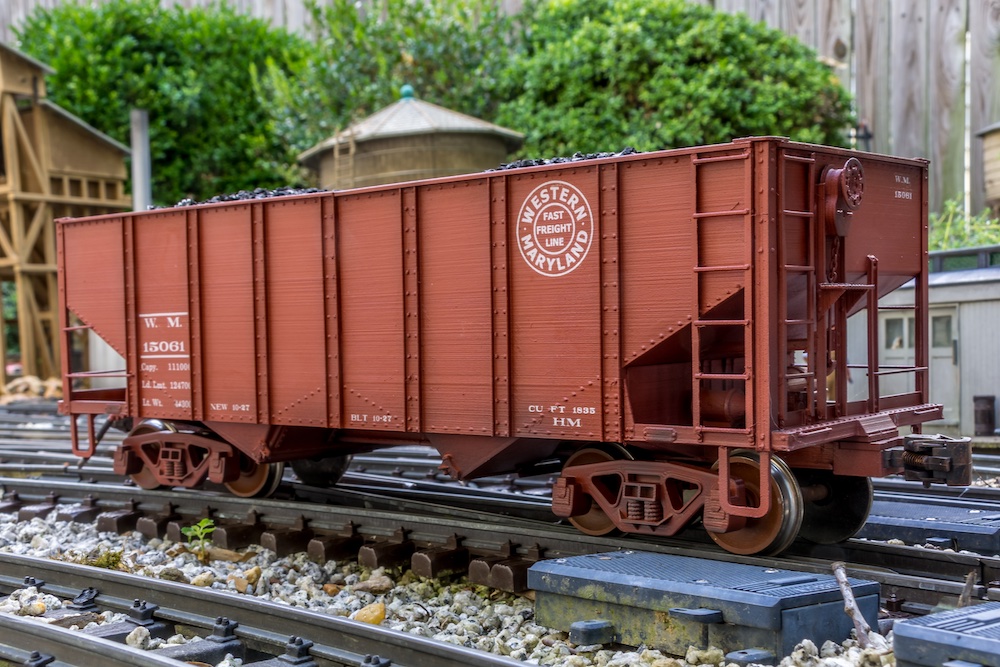Why use Digital Command Control? Related to this is whether you should, so I’ll start by answering that first, and say the answer is yes, you should. Now, as the reasons why? Let’s make a list, shall we?

Why use Digital Command Control for locomotives?
Digital Command Control (DCC) allows your locomotives to do more. Sure, a sound-equipped locomotive will operate on a direct-current (DC) layout, but all you’ll get are the engine sounds, and maybe a brake squeal when you stop the train. Most likely, you’ll get a directional headlight as well. If this is enough for you, you can stop reading here.
But consider this: That sound-equipped locomotive surely has some other tricks up its exhaust stacks. Every sound decoder (the device inside the locomotive that “decodes” the instructions sent to the locomotive) will offer bell and whistle or horn sounds. Now you can signal grade crossings, announce with the horn or whistle when your locomotive is about to move forward or reverse, and ring the bell while crossing bridges or entering tunnels to alert trespassers their day is about to get really uncomfortable.
And if you don’t have sound in your DCC-equipped locomotives, you still get to do more with the lights. They can be bright or dim (locomotives in a siding usually must have their headlights on, but dimmed, to warn approaching trains); you can have the lights on both ends of a switcher illuminated, either bright or dim (another common railroad rule); and with more advanced decoders, you might have classification or marker lights, depending on the model’s prototype.
But wait, there’s more! With DCC you can combine locomotives into sets that will work together, called consisting in the modeling world. If you think the sound of one Alco 251 diesel engine is pretty cool, imagine three! A consist will allow you to operate the group of locomotives to act as a single unit, so the horn sounds will come only from the lead locomotive, for example, which will be the only one with its headlight on.
And then there’s motor control. You can add momentum, so your model of a 120-ton switcher acts more like it weighs 120 tons instead of 10- or 12-ounces. Some decoders have brake functions, which adds to the fun when you’re switching, allowing you to operate similar to the prototype with the engine set to a particular speed (called speed notches on the prototype), while controlling where the locomotive stops and starts with the brake.
Why use Digital Command Control for layouts?
It’s not all about the locomotives, though. What does DCC do for your layout? If you’re planning to run more than one train, this is where DCC really shines.
For a DC layout, each locomotive or set of locomotives needs its own power supply, and that power supply has to be switched to control a part of the layout your train is on. The method of doing this is called block control. Your model railroad is broken up into electrically isolated blocks, each with a switch to connect the block to a power supply. This involves lots of complex wiring. It also makes some operations difficult. Remember consisting where you couple multiple locomotives together to run them in a set? Doing this in old-school DC means either you have a specific spot on your layout where locomotives can be in two different blocks so you can run them together, or you get out the 0-5-0 switcher and push them together by hand.
Digital Command Control means you can couple multiple locomotives together anywhere on the layout, even adding helpers when you find your train is too long to climb a grade. You can also control other layout aspects using stationary or accessory decoders. These devices can line switches, turn lights on and off, or trigger sounds or animation.
Another feature of DCC is the ability to go wireless. Manufacturers offer both radio and infrared wireless throttles, allowing you to operate your train as you walk alongside it. You’re not tied to an operating console, so it’s easy to line turnouts by hand as you come to them, and to use a pick to uncouple cars in a yard or at a spot near an industry on a siding. You can even buy add-ons that will allow you to use old cellphones as wireless throttles with free apps such as Engine Driver and WiThrottle.
Then, of course, you can connect your DCC system to a computer, allowing automated operations, modern computer-controlled dispatching just the current Class I railroads, and even the option for remote operators to participate in running trains on your layout.
If all of this sounds too complicated, there are simple DCC systems that unlock all of the features built into modern sound-equipped locomotives without all of the extra functionality owners of larger layouts might want. Of course, most of these basic systems are simple to upgrade with a few extra components, so the system you buy today for a small apartment layout could be expanded along with your empire.

Run like the big boys
With all of the features offered in DCC, it’s easy to make a model train layout work much more like a miniature railroad instead of a toy train. Digital Command Control is the next step in making our models look, sound, and behave more like the full-sized railroads we’re modeling, and that’s why use Digital Command Control.













